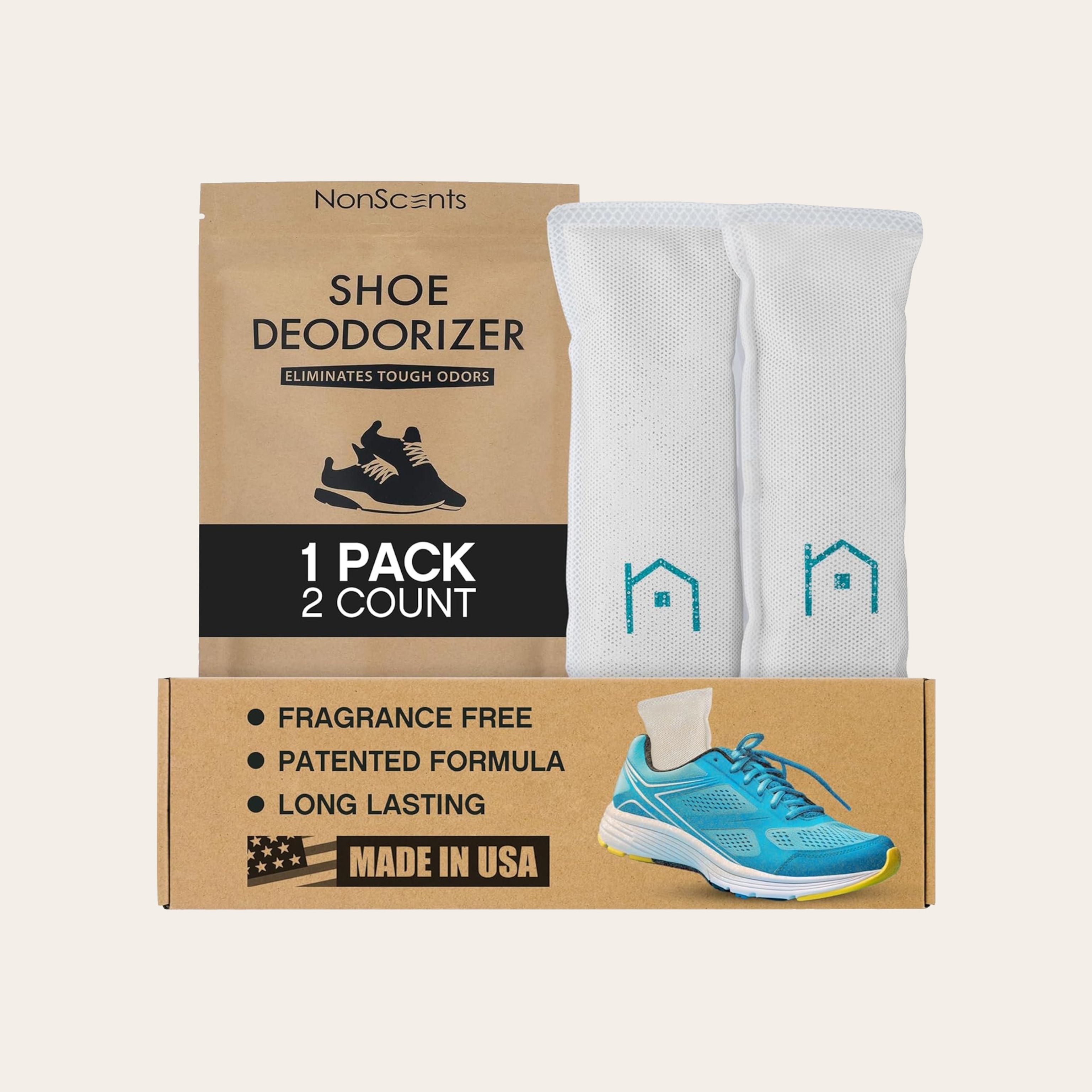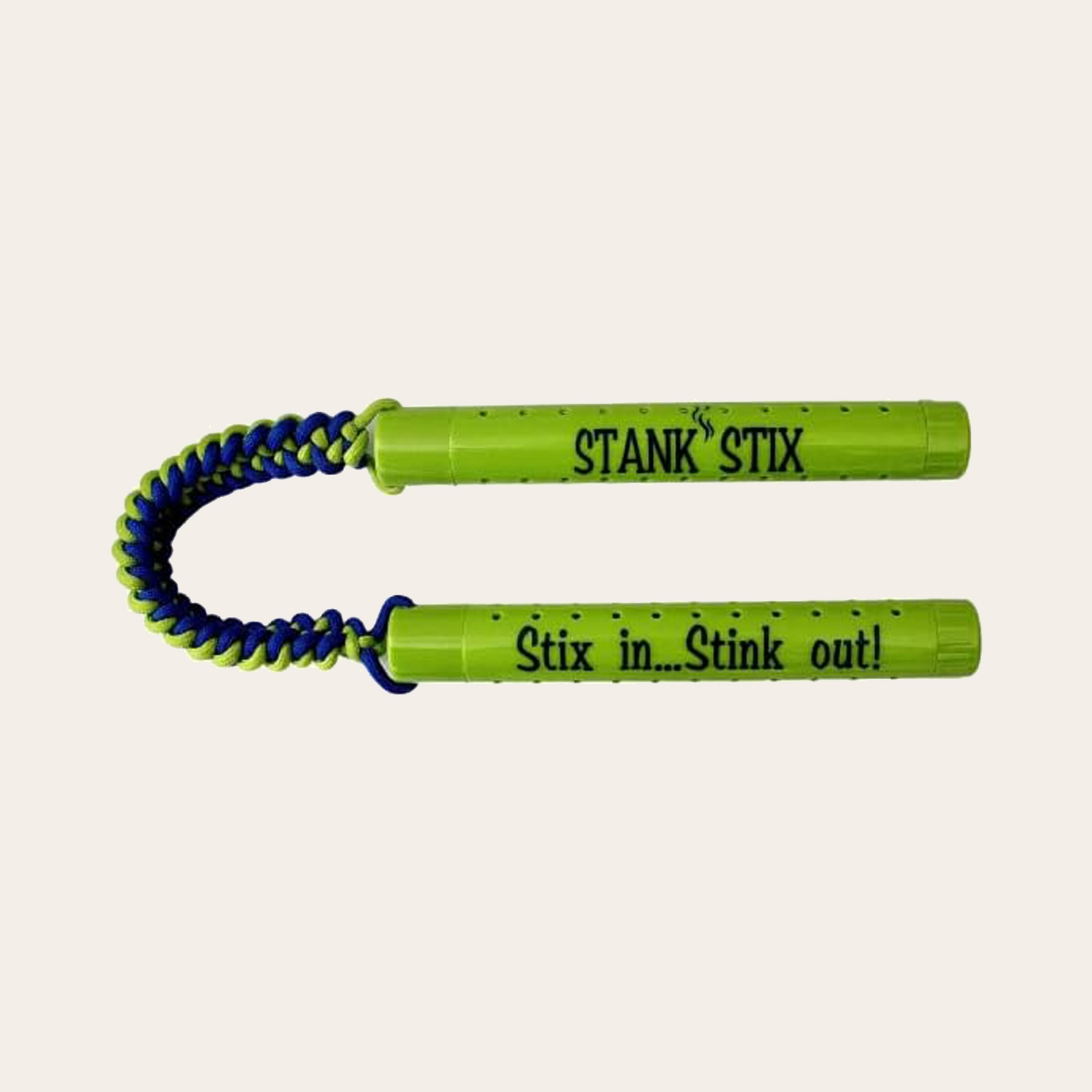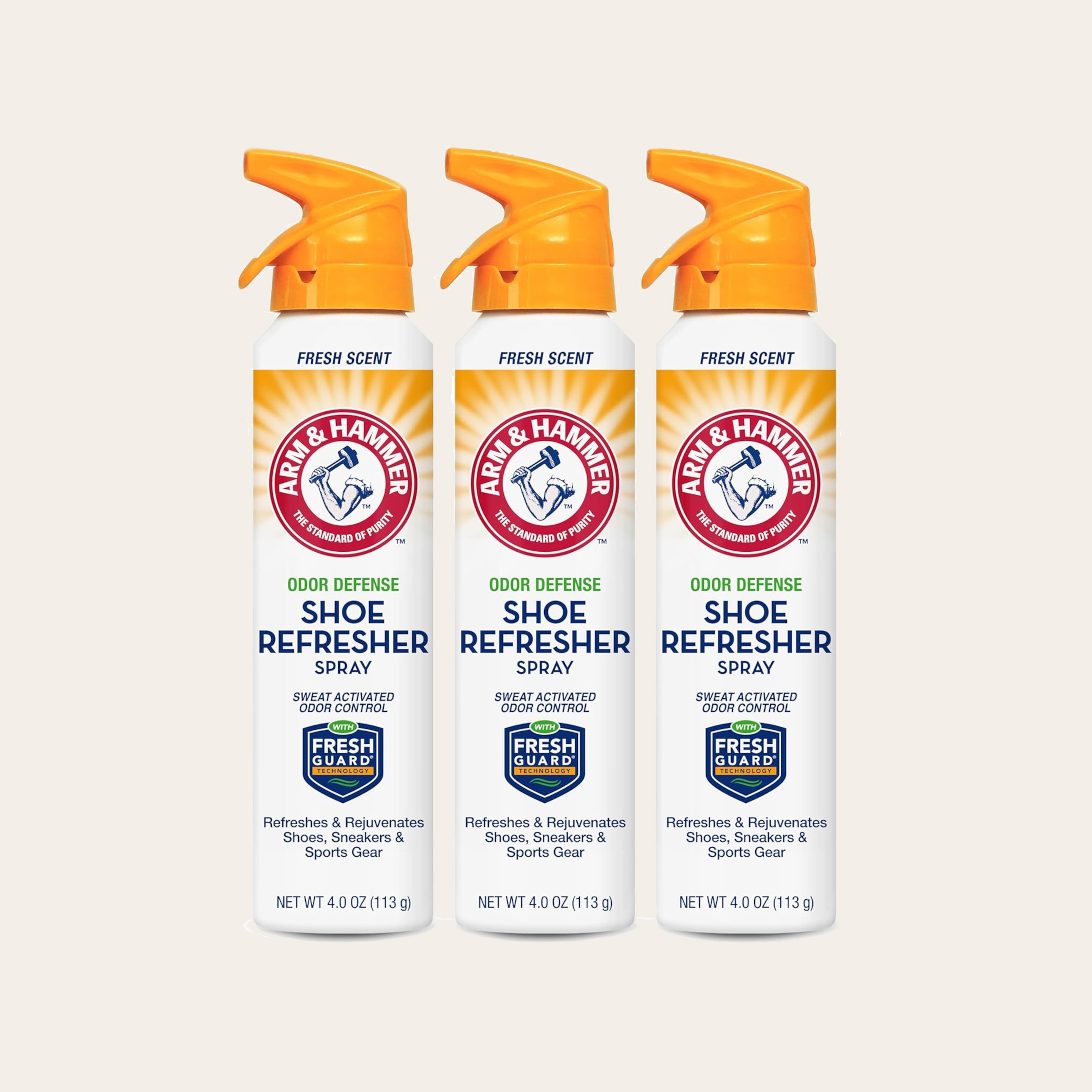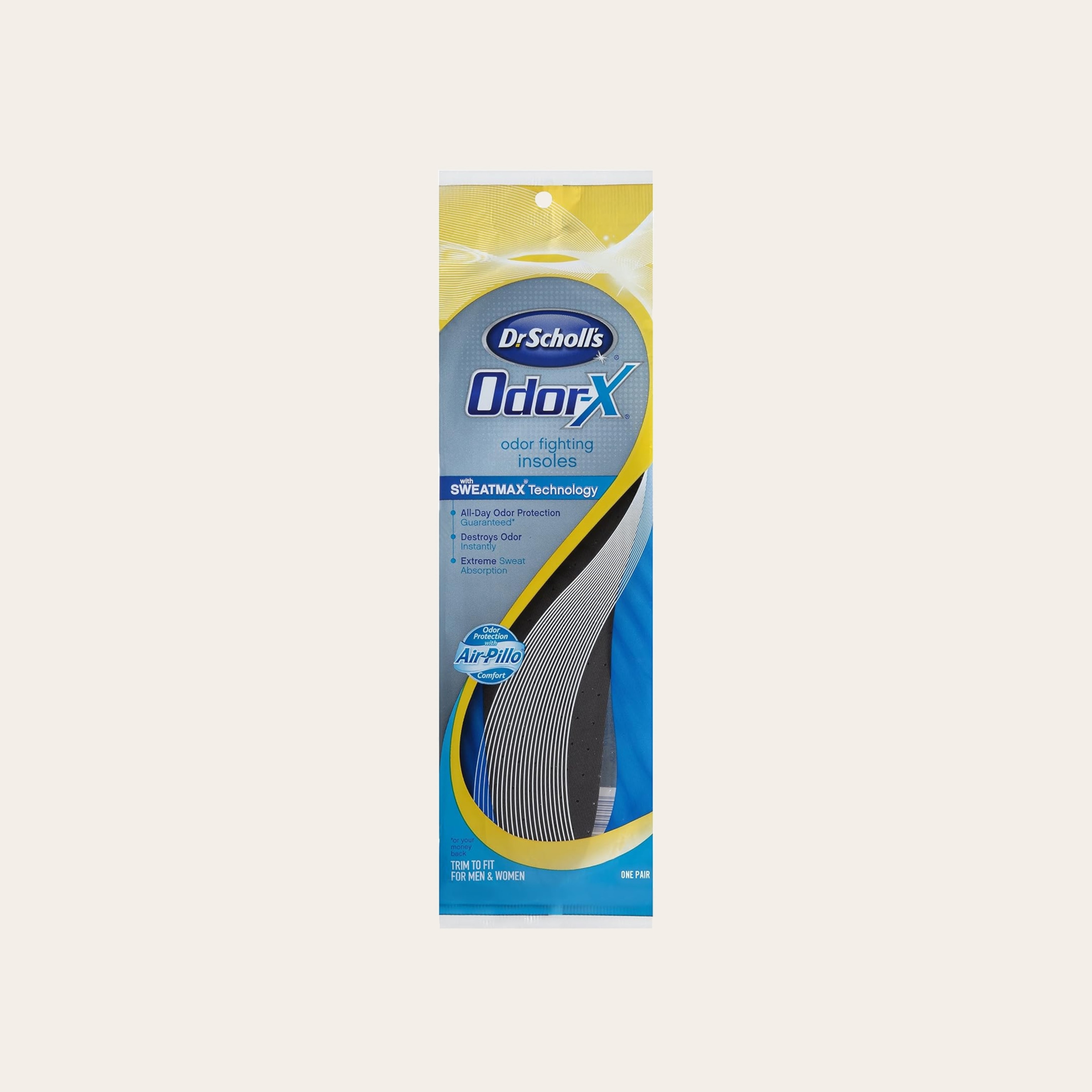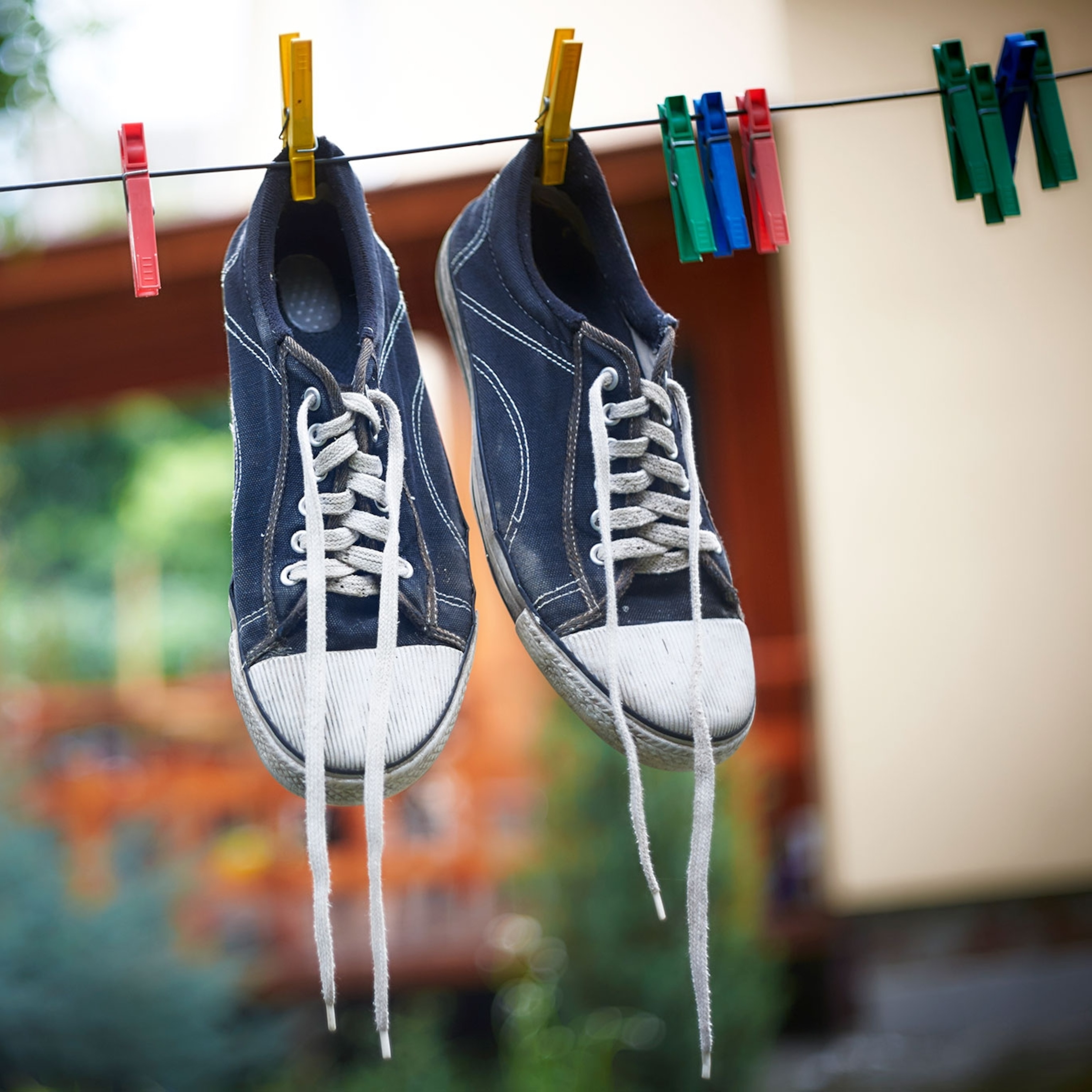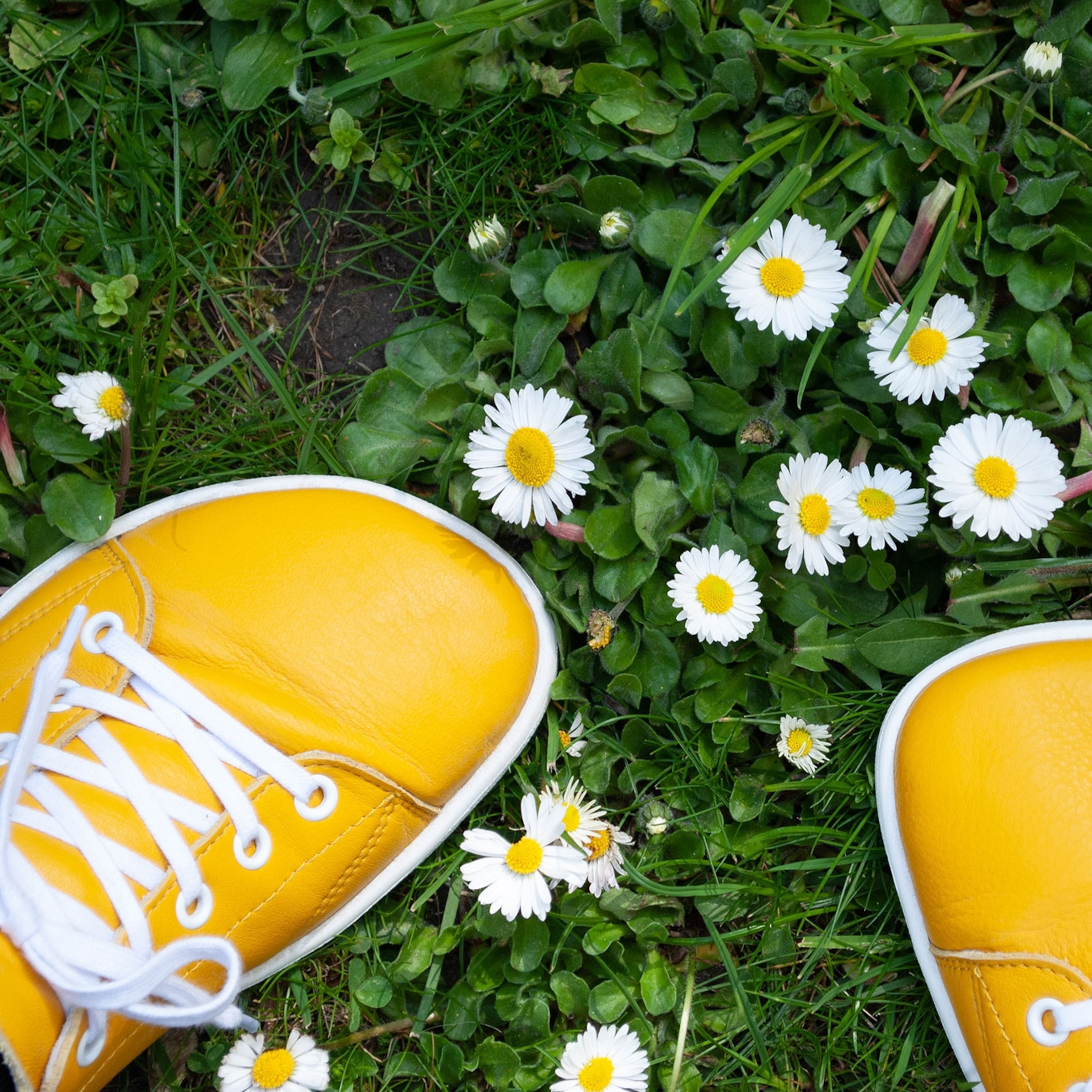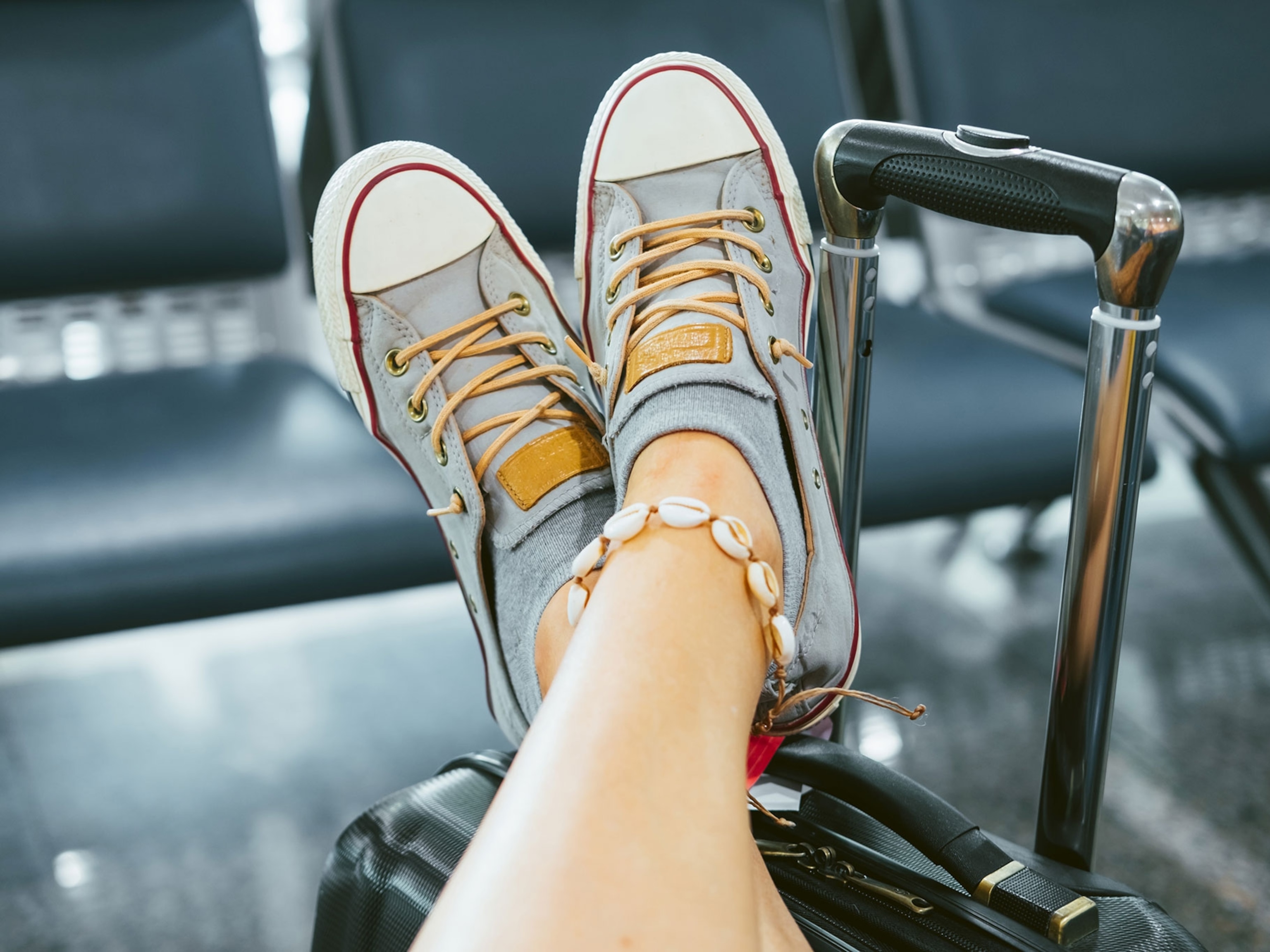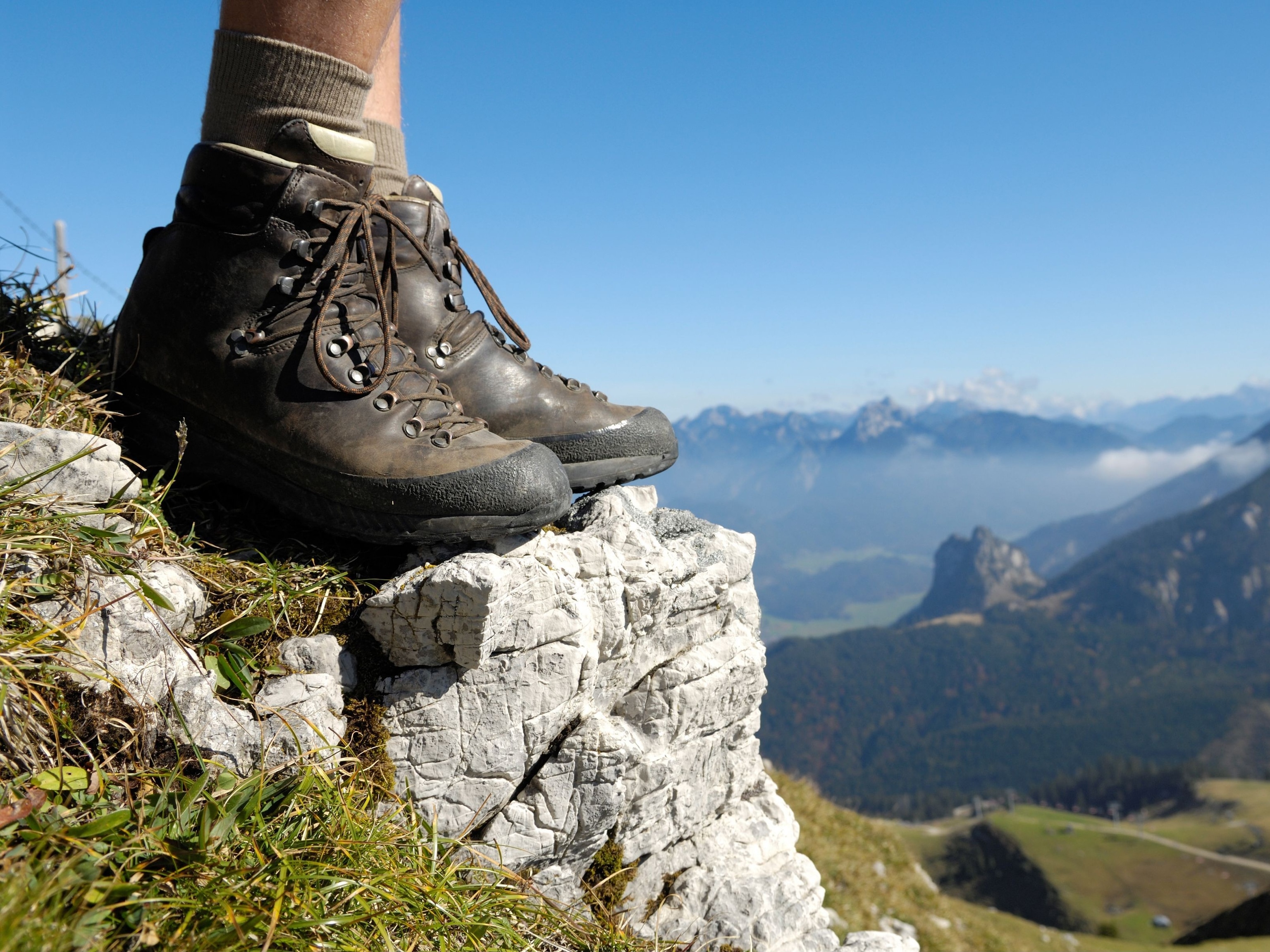How to get rid of shoe odor
Look, it’s happened to all of us. Here are a few tips to prevent smelly shoes—and to remove them so you can keep your favorite footwear for as long as possible.

Have you ever experienced an unpleasant smell coming from your favorite shoes? Usually, it’s our go-to pair that ends up with an odor. The culprit? According to Dr. Breeann Wilson of Pure Podiatry of Western New York, “The growth of bacteria and fungus are the main causes of foot odor, clinically known as bromodosis.” She says the cause of this condition can often be traced back to sweaty feet, a medical condition known as hyperhidrosis.
While these pesky organisms thrive in the dark, moist environment of our shoes, there’s no need to bid farewell to your shoes just yet. With a few essential tools and a solid maintenance routine, you can eliminate the smell and extend the life of your shoes. In this article, we'll explore how to get rid of shoe odor using convenient retail products and everyday ingredients you probably already have in your home.
How to get rid of shoe odor: 3 tips
Getting rid of shoe odor requires proper hygiene and an effective sanitizing technique. Here’s how to get the smell out of shoes:
1. Practice good feet hygiene: First and foremost, maintaining good hygiene is crucial to eliminating shoe odor. Keep your feet squeaky clean and dry by regularly washing them and paying extra attention to the spaces between your toes. Let them fully air dry before slipping into your socks or shoes.
2. Keep your shoes clean: Simply washing and drying your feet will not remove the stench from shoes entirely. The cleanliness of your shoes also plays a significant role. A study by the University of Siena and JOKER Technologies found that using Cyber Clean putty as a sanitizing technique yielded impressive results on athletes' shoes.
The study cited the elastic putty's ability to adapt to various surfaces as a significant contributor to its effectiveness in drastically reducing microbial populations after 30 days of use. Keep in mind that this study was funded by JOKER Technologies, the company that makes Cyber Clean Putty. You can also deodorize some shoes by washing them in a washing machine.
3. Try antibacterial products for shoes: Dr. Wilson says an antibacterial product is the ultimate weapon against shoe odor. She advises her patients experiencing shoe odor to spray their shoes with Lysol and let them air dry in the sun. Other readily available solutions include NonScents Shoe Deodorizer and GloveStix’s StankStix, which are ideal for absorbing sweat and eliminating odors. You can also use disinfectant sprays like Arm & Hammer Shoe Refresher on your shoes' interior and exterior and leave them to dry overnight. For a quick fix, invest in a PediFix ShoeZap UV Sterilizer to eliminate bacteria in mere seconds.
Buy it now on Amazon
Buy it now on Amazon
Buy it now on Amazon
(Do you have bunions? Here are 7 shoes that might help)
What to know about getting smells out of shoes
One of the best ways to remove smells from shoes is to revitalize them with a more pleasant scent. Research conducted by the Industrial Technology Development Institute verified the antibacterial properties of freeze-dried lemons and their ability to reduce the foul smell of shoes.
Other natural ingredients that remove smells are essential oils such as tea tree, peppermint, or eucalyptus. You can even tuck dryer sheets inside your shoes overnight to banish odors. It's important to keep in mind that covering up an odor doesn't address the root cause of the problem, so any long-term solution needs to address the accumulation of bacteria in the shoes.
If your shoes are washable, give them a good bath and dry them thoroughly in the sun or by a heater. Avoid placing shoes in a dryer, as doing so could damage or shrink your shoes. Here are three additional things to know about getting the smell out of shoes:
Cleaning and maintenance: Good foot hygiene, including washing feet daily and regularly cleaning both the inside and outside of shoes, can prevent the accumulation of dirt and bacteria that cause odors.
Choice of deodorizing agent: Various substances can neutralize and absorb shoe odors. Baking soda is one of the most popular choices due to its ability to absorb moisture and neutralize pH levels. Alternatively, white vinegar is a powerful natural odor fighter that can be used in a diluted mix with equal parts water to wipe the insides of the shoes without causing damage to the shoes. Use the vinegar solution whenever you take your shoes off for the best results.
Proper drying and ventilation: Moisture is the breeding ground for bacteria and, thus, odor. Keep your shoes dry and well-ventilated to prevent the growth of smelly microbes. Whether air-drying in a breezy area or using newspaper or an alcohol-soaked cloth to absorb moisture, ensure that your shoes are completely dry before wearing them again.
(The 9 best walking shoes for women)
What causes foot odor in the first place?
Your feet contain more sweat glands per square inch than anywhere else on your body. While sweat itself doesn't smell, bacterial waste products do. When mixed with bacteria, fungi, and sweat, certain synthetic materials used in shoes can greatly encourage smelly feet.
Dr. Wilson further emphasizes the importance of keeping shoe odor at bay, as these bacteria and fungi can also cause harm in the form of rashes, infections, athlete's foot, and fungal toenails. That's why choosing suitable shoe materials is also essential. You can ward off unpleasant odors by opting for materials that promote breathability, moisture-wicking, and overall foot health. Here’s a recap of the three main contributors to shoe odor:
Bacteria: Bacteria naturally present on your skin feed on the sweat produced by your feet, releasing odorous byproducts.
Sweat: Your feet have more sweat glands than any other part of your body, and when sweat combines with the bacteria on your skin, it creates an environment conducive to bacterial growth and unpleasant odors.
Poor shoe ventilation: Shoes that do not allow proper airflow can trap moisture, providing an ideal breeding ground for odor-causing microorganisms. Shoes made with leather, canvas, and mesh offer optimal breathability, allowing air to circulate inside the shoe.
(The 8 best walking shoes for men)
How to prevent stinky shoes
Dr. Wilson says the best way to combat stinky shoes is to prevent them from being sweaty in the first place. “I typically advise patients experiencing odor in their shoes to use a spray or liquid antiperspirant on their feet before putting their socks on for the day,” she says.
Considering these and the aforementioned tips, here are four additional actions you can take to prevent shoe odor.
Apply foot powder or deodorizers: In addition to antiperspirant, arm yourself with foot powder or deodorizers to absorb moisture and add an extra layer of protection. If you have sensitive skin, look for products with natural and effective ingredients that won’t irritate your skin.
Don't skip the socks: Going sockless is one of the quickest ways to invite your shoes to smell. Wear breathable socks that wick away sweat whenever feasible, and change your socks and shoes immediately after a workout or long walk.
Upgrade your insoles: Instead of trying to get rid of the smell from your standard insoles, replace them with ones specifically designed to combat odor. Look for activated charcoal or baking soda for effective absorption. Dr. Scholl’s Odor-X Insoles have built-in odor-fighting properties that absorb moisture and neutralize smells. These types of insoles can extend the freshness of shoes between cleanings.
Alternate shoes regularly: Give your shoes a break by alternating them regularly to prevent the buildup of sweat-loving bacteria. Your nose (and feet) will thank you!
Buy it now on Amazon
Frequently asked questions
How long does it take baking soda to deodorize shoes?
Baking soda can yield results in less than 24 hours. Sprinkle baking soda inside your shoes and allow it to work its magic overnight. In the morning, shake the shoes out thoroughly before wearing them again.
How to remove smells from shoes without washing them?
For shoes that can't be washed, use a leather or fabric cleaner. Just be sure to let the shoes dry completely before wearing them again. A unique trick to zap bacteria from smelly shoes without getting them wet is to pop them into a plastic freezer bag and toss them in the freezer overnight. The chilly temperature can kill lingering bacteria. The next day, let them thaw and dry naturally.
How to get rid of shoe odor with tea bags?
Using teabags is another all-natural option for deodorizing shoes. The tea bags should still be moist from being steeped. The tannins in the tea can penetrate the insole of your shoe, fighting off the odor-causing bacteria and leaving a nice herbal scent. For extreme odors, layer extra tea bags along the entire length of each insole from the toe of the shoe to its heel.
References
B. A. P. Sebastian, A. C. Javier, R. F. Chua and B. D. Traje, "Efficiency of organic deodorizer in removing foul smell in shoes," 2020 IEEE Integrated STEM Education Conference (ISEC), Princeton, NJ, USA, 2020, pp. 1-4, doi: 10.1109/ISEC49744.2020.9397852. https://ieeexplore.ieee.org/abstract/document/9397852
Messina G, Burgassi S, Russo C, Ceriale E, Quercioli C, Meniconi C. Is it possible to sanitize athletes' shoes? J Athl Train. 2015 Feb;50(2):126-32. doi: 10.4085/1062-6050-49.3.55. Epub 2014 Nov 21. PMID: 25415415; PMCID: PMC4495438. https://www.ncbi.nlm.nih.gov/pmc/articles/PMC4495438/
